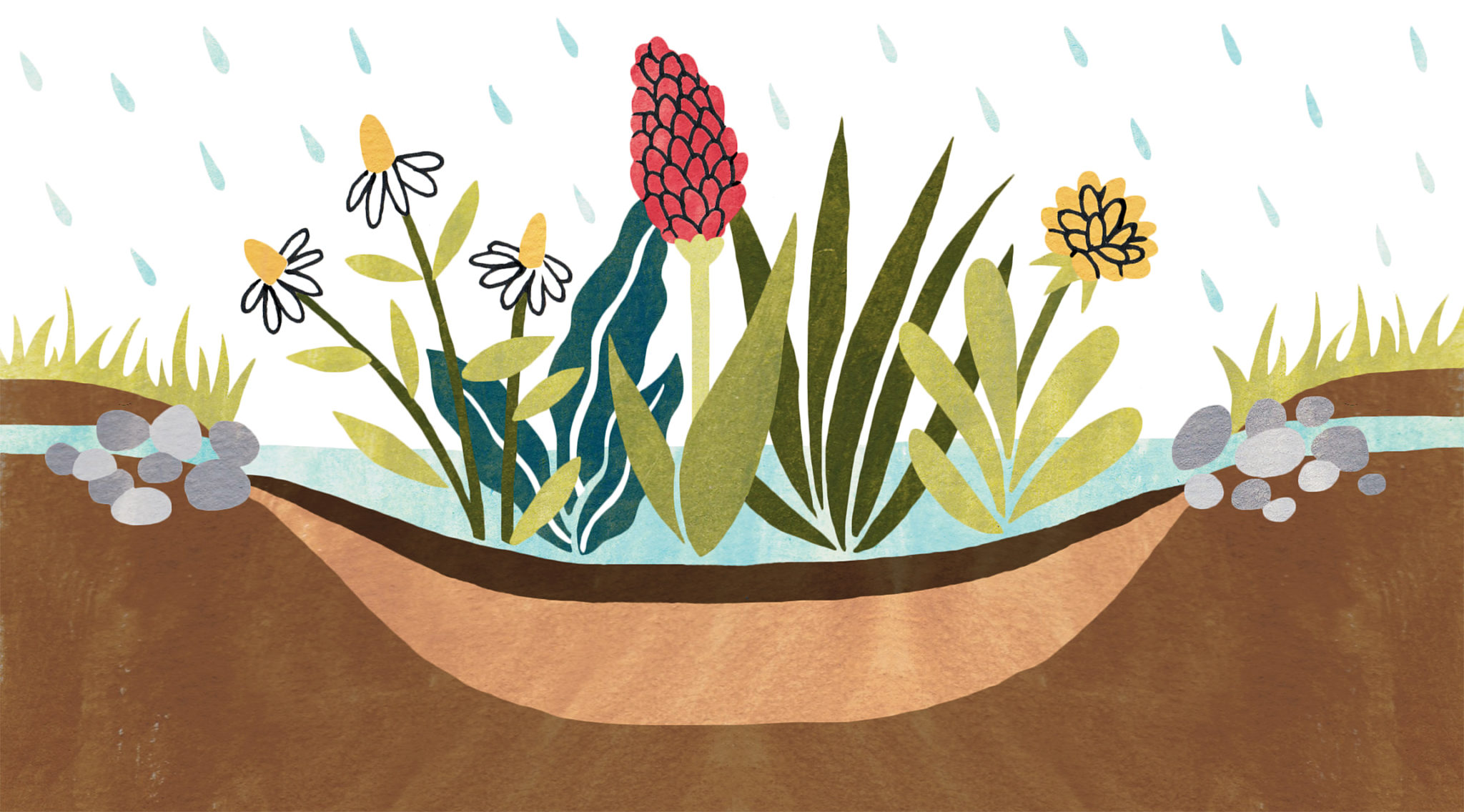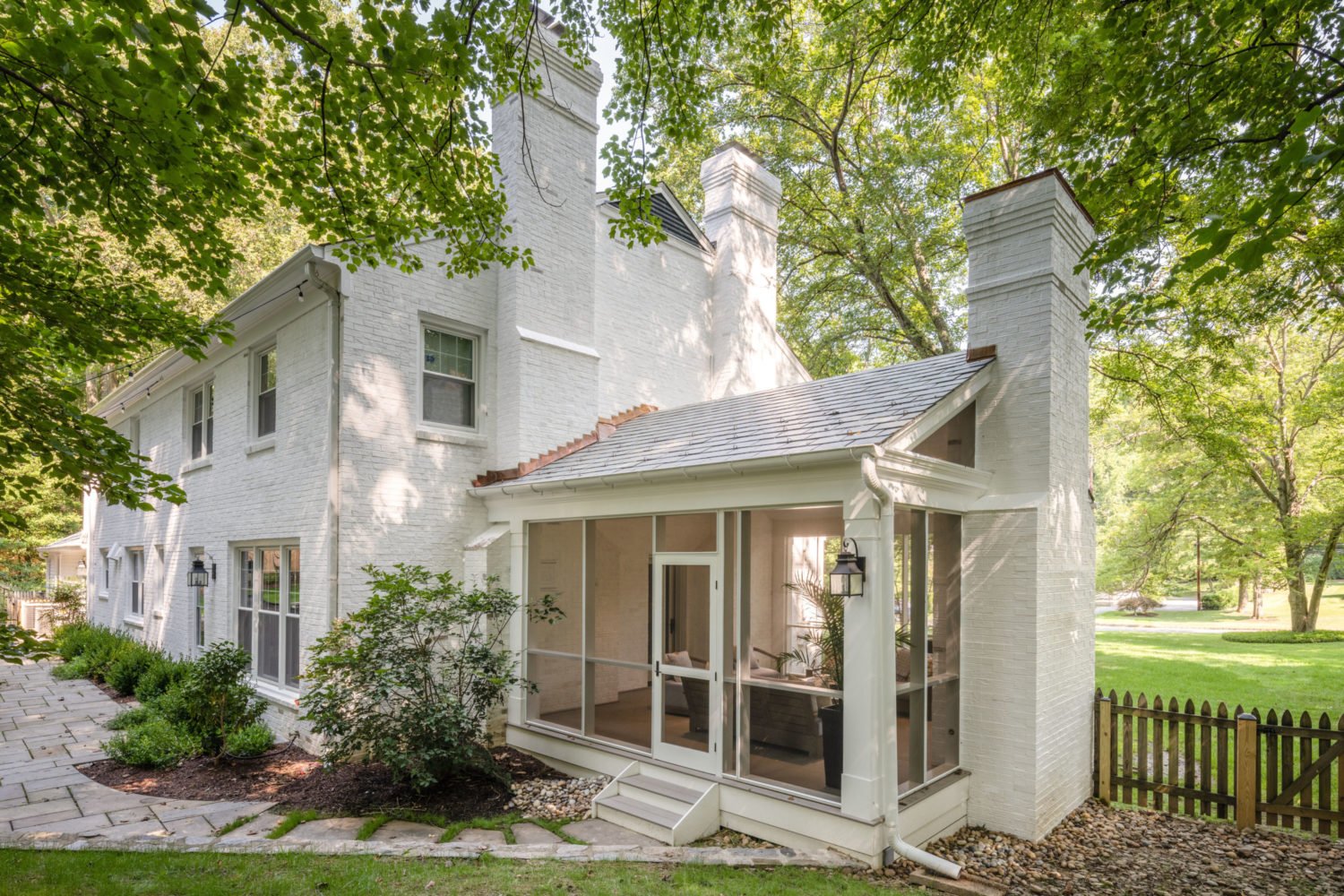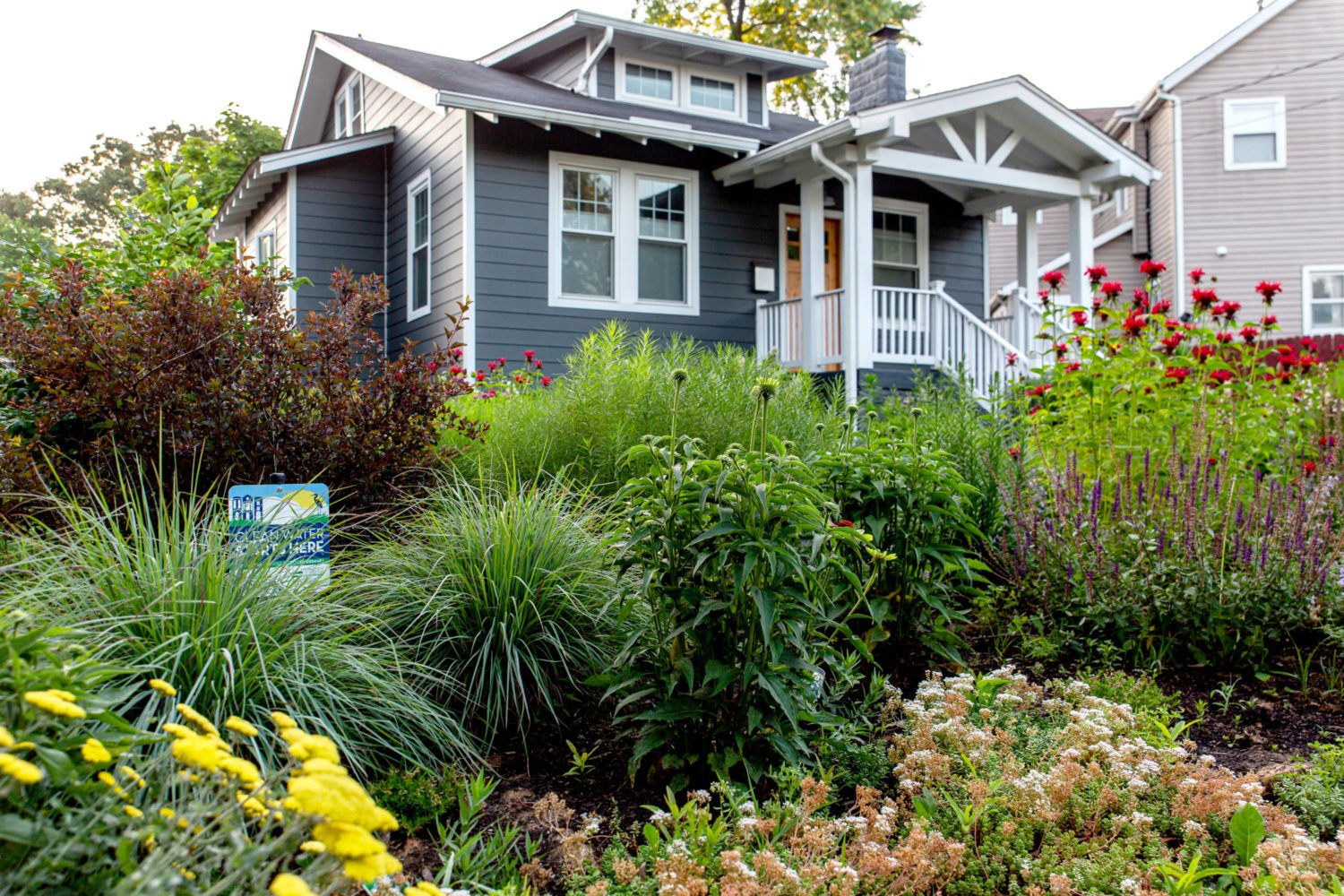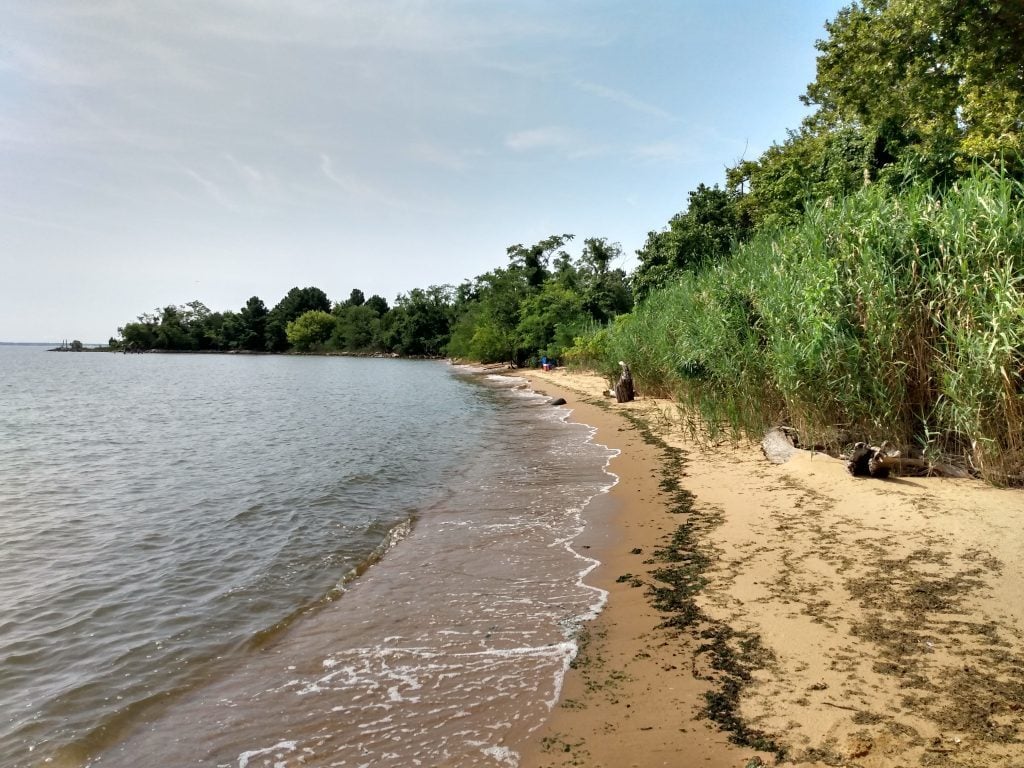Eco-friendly ways to make your yard a more pleasant—and better-looking—place to spend time.
Consider Building a Rain Garden
It’s a remedy for flooding and good for the Chesapeake Bay.
As I watched rain puddle in our backyard, I brought up the idea of a rain garden to my family. My husband raised his brow, no doubt calculating the cost in labor and cash. My daughter responded as if I’d suggested cultivating a poison-ivy crop, convinced that a rain garden would be a scraggly eyesore.
I imagined a colorful plant bed attracting a flurry of butterflies as it directed water away from our foundation and decreased the polluted runoff entering the Chesapeake Bay watershed. I turned to experts to help me bolster my case.
Can homeowners make a DIY rain garden?
Vince Meldrum, president of the environmental nonprofit Earth Force, says yes, as long as you’re willing to put your back into it. He installed one in his own yard as a way to remedy flooding problems: “Rain gardens give water a place to filter back into the ground, essentially letting the ground do what it was designed to all along.”
Designs for each garden are determined by factors such as soil type, permeability, amount of grading, and predicted runoff, says Mary Kirk Menefee, a landscape designer with Merrifield Garden Center. While ambitious homeowners can make these calculations on their own, a pro can be helpful for this part of the process.
Where do I start?
You’ll need a relatively flat area at least ten feet from your foundation and not directly under a large tree whose roots could be damaged. After digging out the entire bed to a depth of two to three feet, infill it with permeable organic material that has a high sand content. The bed can be topped with a few inches of mulch and edged by a river-stone overflow area. Water is directed to the bed by diverting downspouts into buried PVC pipe or into depressions called swales, lined with landscaping fabric and river rock.
What should I plant?
Master gardener Joanne Hutton of Plant NOVA Natives suggests native plants because many of them tolerate both dry and wet conditions while also supporting beneficial insects, which in turn support other wildlife. Hutton recommends checking out plantnovanatives.org for ideas.
To make your rain garden cohesive with the rest of your yard, Menefee suggests incorporating the same plants into other beds. Most important, she stresses that native plants still need tending. “People get in trouble assuming all native plants are equally low-maintenance. Many natives are better adapted to tough conditions, but all plants need good care to become established and look their best.”
How much does it cost to hire a pro?
A typical installation by an approved contractor can range from $3,000 to $5,000 but can easily top $10,000. However, because rain gardens benefit the environment, some jurisdictions offer rebates or grants to offset the cost at least partially.
DC homeowners who participate in the District’s RiverSmart Homes program, now in its tenth year, pay just $75 per 50 square feet of installation for a basic rain garden. To get started, contact the Department of Energy and Environment. After visiting your property, the DOEE will offer a variety of options, then assign your job to a contractor. RiverSmart’s Lauren Linville expects the program to surpass 1,000 installed rain gardens in 2018. That’s an estimated 264,190 gallons of runoff diverted from the Chesapeake watershed in a typical rainstorm.

Start a Plant Swap
Trading with neighbors saves money and benefits the environment.
While Lyft and Airbnb may be the mark of this century’s sharing economy, history suggests that plant swapping has been around much longer as a way for civilizations to maximize crops. Though their survival probably doesn’t depend on it, this millennium’s gardeners can still reap plenty of benefits from plant sharing—including building relationships with neighbors, saving money, and keeping discarded plants out of the waste stream.
If you need to divide your ferns and you notice that a neighbor’s flower beds are overrun with spring columbine volunteers, why not offer to trade? Plant swapping can start with an informal, over-the-fence conversation, or it can evolve into an organized event through a neighborhood gardening club or online group.
Master gardener and naturalist Joanne Hutton offers a couple of tips: She suggests that gardeners thoughtfully consider which plants to accept, prioritizing natives. And she says they should exercise caution about species that are “vigorous”—in other words, likely to grow rapidly—if they have limited space or established beds.
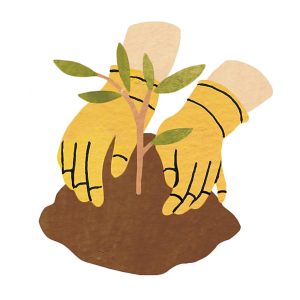
Ways to Aid the Bay
Don’t want to build a rain garden? Here are other ways to create a more Chesapeake Bay–friendly landscape.
Clean your gutters. Clogged gutters can cause water to overflow where it shouldn’t, putting your foundation at risk and eroding topsoil, which then gets fast-tracked to the Chesapeake watershed through storm sewers.
Decrease impermeable surfaces. Forgoing concrete patios in favor of more absorptive surfaces such as native grasses, plant beds, and spaced pavers can decrease runoff.
Install a dry well. This below-grade reservoir captures water from gutters, allowing it to be absorbed slowly into the ground without puddling on the surface or becoming polluted runoff. Dry wells often can handle more water than a rain garden and, once installed, generally require less maintenance.
Plant native species. Natives are generally hardier, support wildlife, and even discourage mosquitoes by strengthening the natural ecosystem. To find the best options for your space, try the National Wildlife Federation Native Plant Finder’s zipcode search.
Get a rain barrel. Redirect downspouts to rain barrels and you’ll find yourself with buckets of guilt-free water for hydrating summer blooms. They require little maintenance and are relatively low-cost.
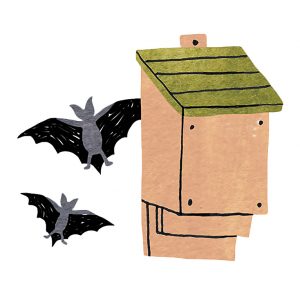
Fight Mosquitoes—With Birds and Bats
Getting the pests’ natural predators on your team can go a long way.
In Washington, keeping mosquitoes away can feel like a never-ending battle, no matter how vigilant you are about clearing yard debris and stagnant water or how much bug spray you buy. But experts say there’s one other (all-natural, environmentally friendly) line of defense: encouraging predatory birds and bats—yes, bats live throughout the region—to hang out near your house.
Dana Limpert, an ecologist for Maryland’s Department of Natural Resources, says bird species such as bluebirds and purple martins take care of pests during the day, while bats take over at night. A yard populated with native plants, especially those with winter berries, will attract birds throughout the year.
To attract bats, Limpert recommends providing a “bat box”—an artificial roost often made of wood. Place it at least ten feet high and 20 to 25 feet from the nearest trees. Make sure a supply of fresh water is within a quarter mile. Bats are finicky about the temperature of their boxes but often select ones that receive six to seven hours of direct sun.
Then wait. The one downside? It could take months, or even years, before bats decide to move in.
This article appeared in the April 2018 issue of Washingtonian.

